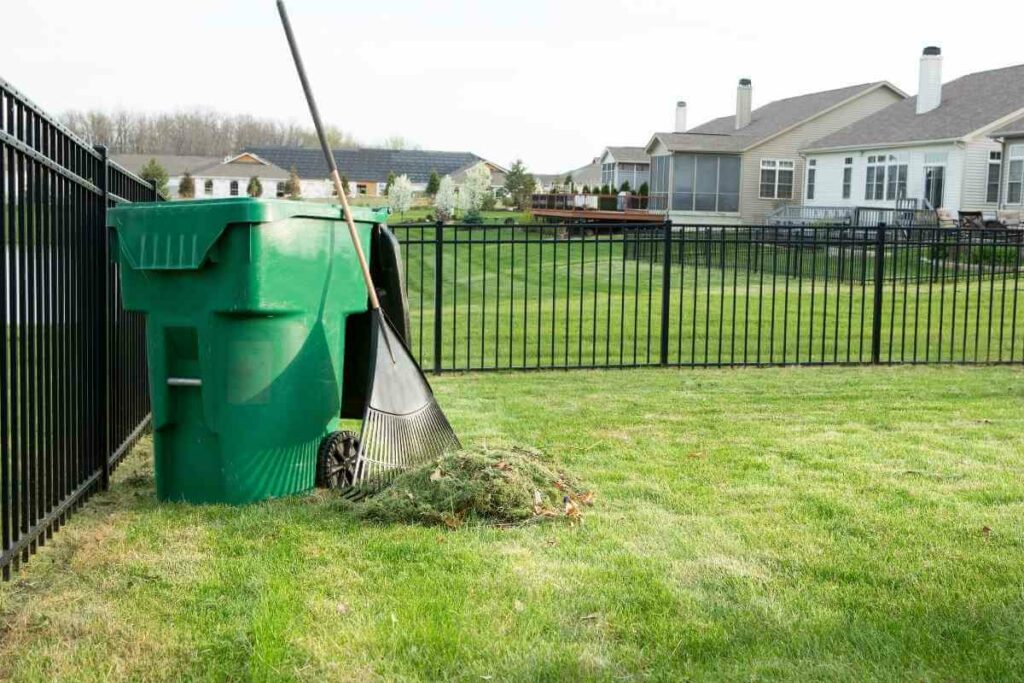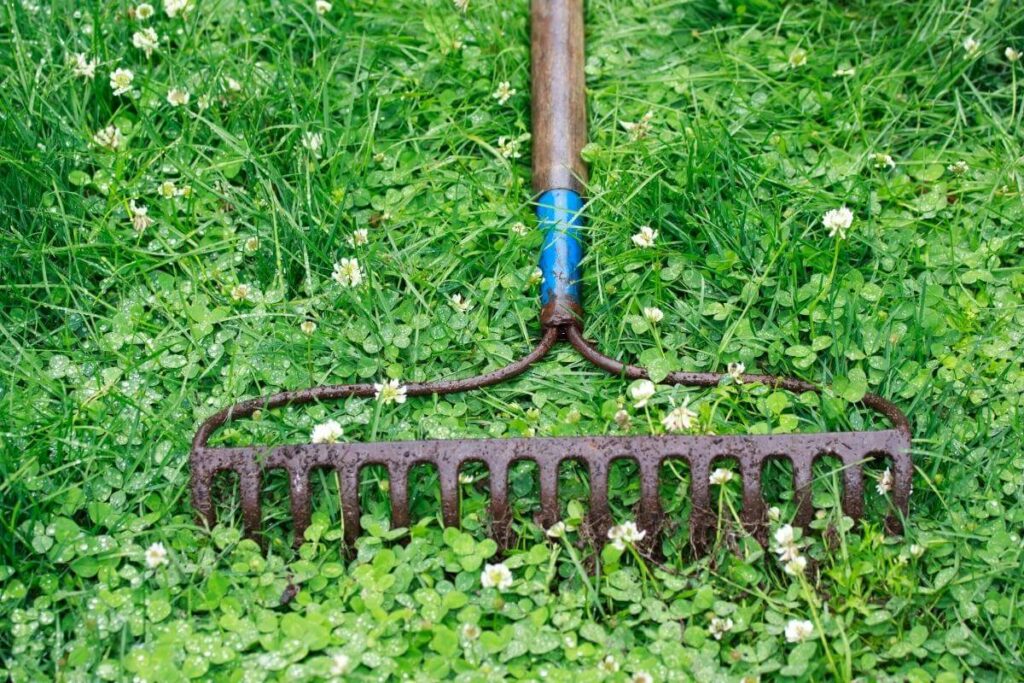The ideal raking time is when the lawn turns green in April. That allows you to focus on affected areas. Avoid raking immediately after winter because the lawn is still brown, which would make it hard for you to target dead leaves.
Winter weather affects matted lawns, which makes raking an important procedure. You can focus on matted and brown sections of the lawn.
Raking helps reduce dead sections and promotes healthy summer growth.
It is an important technique, especially if you live in regions with abundant snowfalls or the lawn gets matted due to overwatering.
Why Rake your Lawn during Autumn
Raking during autumn is important for lawns needing deep raking.
This is because it exposes soil in different sections. That creates a proper seedbed for new grass and weeds, and raking during autumn allows you to avoid plenty of weeds.

Raking in spring only allows you to remove moss, leaving the weed problem unsolved.
However, there are instances when raking in spring is viable:
- For instance, if you never raked the previous autumn.
- Secondly, if you are raking a shady section, then raking during autumn will only worsen the situation because such areas thicken during spring.
Preparing the Lawn for Raking
Before you start raking let the grass dry for at least one week.
This helps reduce the shock on the grass. Also, you should uproot weeds manually; herbicides disrupt seed germination after raking.
Lastly, ensure the soil is moisturized to fasten the lawn’s recovery; soft or dry soil prolongs the process.
Works Best: You should mow the lawn before raking, ensuring you do not scalp it. Tallgrass or weeds increase the raking tool’s resistance complicating the scarifying process.
Advantages of Raking Leaves
Raking a lawn benefits you and the surrounding environment.
For instance, raking promotes grass growth which improves the property’s aesthetic appeal.
Also, when too many leaves accumulate on the ground they reduce the amount of sunlight reaching the grass, hindering its growth especially seasonal grasses, which grow well in the fall.
These seasonal law grasses are active and strengthen their support systems during cool weather, mainly during fall.
Raking leaves has other advantages, including:
- a fresh atmosphere and exercising ground.
- It also eliminates dead grass and other plant materials and reduces the leave coverage harboring plant diseases.
- Most importantly, raking improves the property’s physical appeal and attractiveness.
What to Do with the Leaves
After raking, you can utilize the leaves to mulch different sections around the yard:
- The first approach is composting them in a pile and letting them decompose.
- The second approach is drying the leaves, but you have to chop them into smaller portions by mowing and collecting them in containers or bags for mulching.
- Chopping or shredding the leaves increases their decomposition rates without forming molds.
You can arrange dry mulch around other plants for better insulation. You can also spread the chopped leaves in a garden to boost soil nutrients.

When Not to Rake
While raking is important, not doing it serves several environmental purposes.
For instance, when the leaves decompose, they increase soil nutrients promoting plant growth. Moreover, these leaves help to conserve soil water while suppressing weed growth.
Lastly, moths and butterflies utilize decomposing leaves. For instance, pupa shelter in the leaves to overcome cold weather, thus raking them preventing butterflies from coming out.
The fallen leaves also serve as a source of food for most birds and their young ones.
Other Raking Options
You may find raking tiresome and require an alternative such as a leaf blower.
A bigger leaf blower is vital when moving dense leaves that could be wet and heavy.
You can also consider a leaf blower with a vacuuming option to help you transport the leaves to a decomposing site easily.
Where the leaves are few, you can use a blade-fitted lawnmower to chop them.
After this, you can leave the rest on the lawn to decompose while other animals benefit from them through food and shelter.
That ensures you rake your lawn and improve the environment without breaking your back.
Final Thoughts
Raking is important for the health and vitality of your lawn.
This is because too many fallen leaves on your turf block the grass from receiving water, nutrients, sunlight, and healthy airflow.
Nonetheless, you do not have to gather every fallen leaf to create a healthy lawn, even when different grass types are on your property.
In other words, leaving a few fallen leaves uncollected will not ruin your lawn.